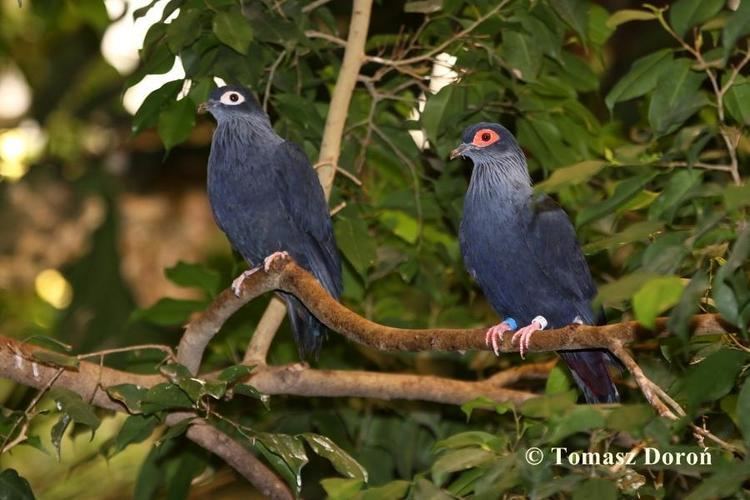Kingdom Animalia Genus Alectroenas Higher classification Blue pigeon Order Columbiformes | Family Columbidae Phylum Chordata Rank Species | |
 | ||
Scientific name Alectroenas madagascariensis Similar Blue pigeon, Bird, Pigeons and doves, Madagascan green pigeon, Seychelles blue pigeon | ||
The Madagascan blue pigeon (Alectroenas madagascariensis) is a species of bird in the family Columbidae. The species is closely related to the other two extant species of blue pigeon, the Comoros blue pigeon and the Seychelles blue pigeon. It is endemic to northern and eastern Madagascar.
Its natural habitats are tropical moist lowland forests and subtropical or tropical moist montane forests, both undisturbed and degraded, from sea-level to 2,000 m (6,600 ft). Within this habita they are often observed from the tree tops and on branches above the canopy. The species is apparently partially migratory, leaving the northern part of the island for part of the year and moving west during the rainy season. More research is needed to understand this behaviour.
The Madagascan blue pigeon is 25 to 27 cm (9.8–10.6 in) long. The plumage of this species is dominated by shades of blue, as the name suggests; the neck and throat are silvery blue-grey and the plumes are filamentous, the upper parts are silvery-grey, and the breast blue-grey going to deep blue on the belly. The tail is deep red, and the head is blue with a large red patch of bare skin around the yellow eye. The feet are red and the small bill is greenish with a yellow tip.
Little is known about its behaviour. It has been observed feeding on fruit, either in pairs or in small groups of up to 12 birds. The nests are simple platforms of twigs placed 6–20 m (20–66 ft) up a tree, and the clutch size is a single egg.
